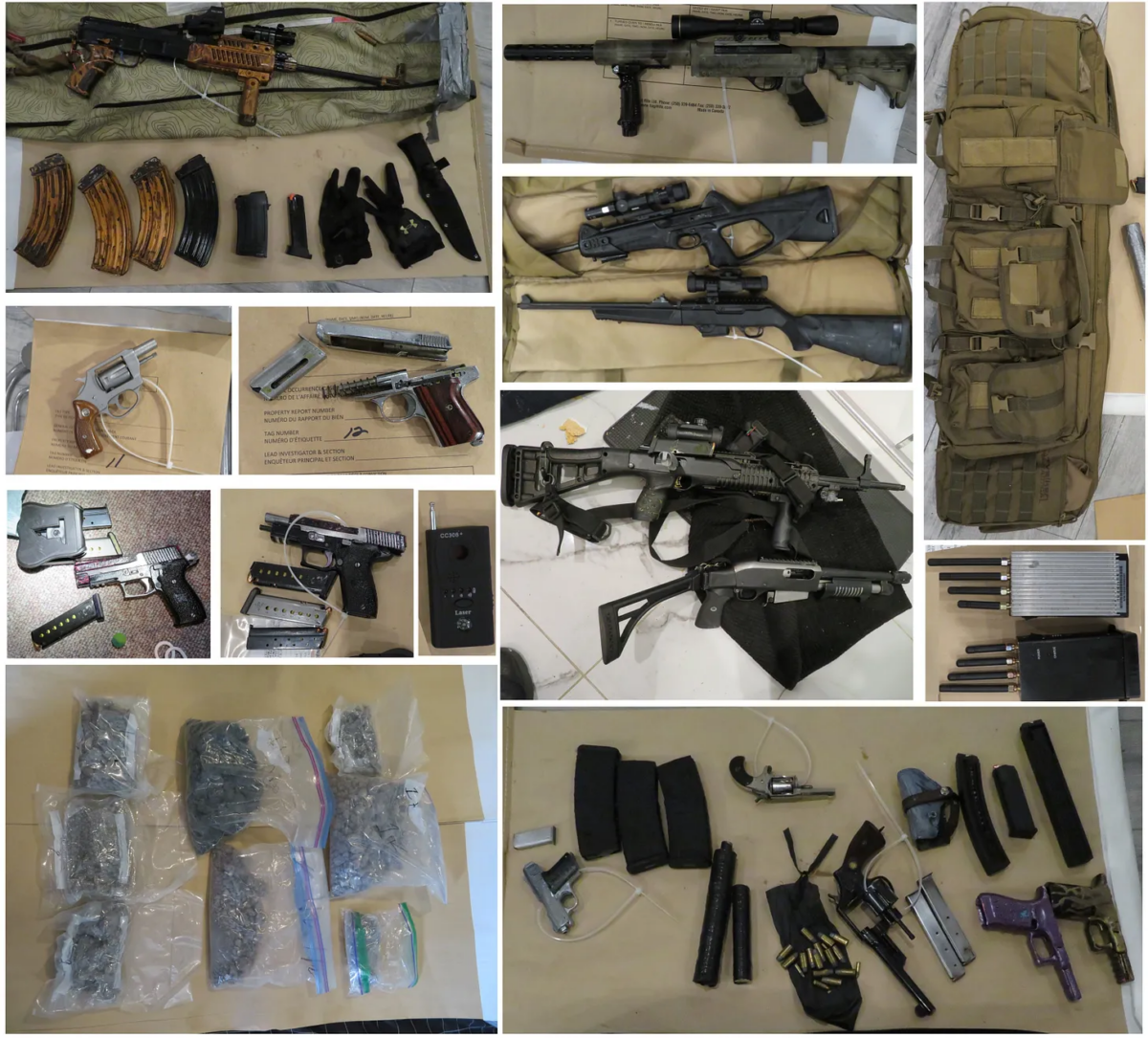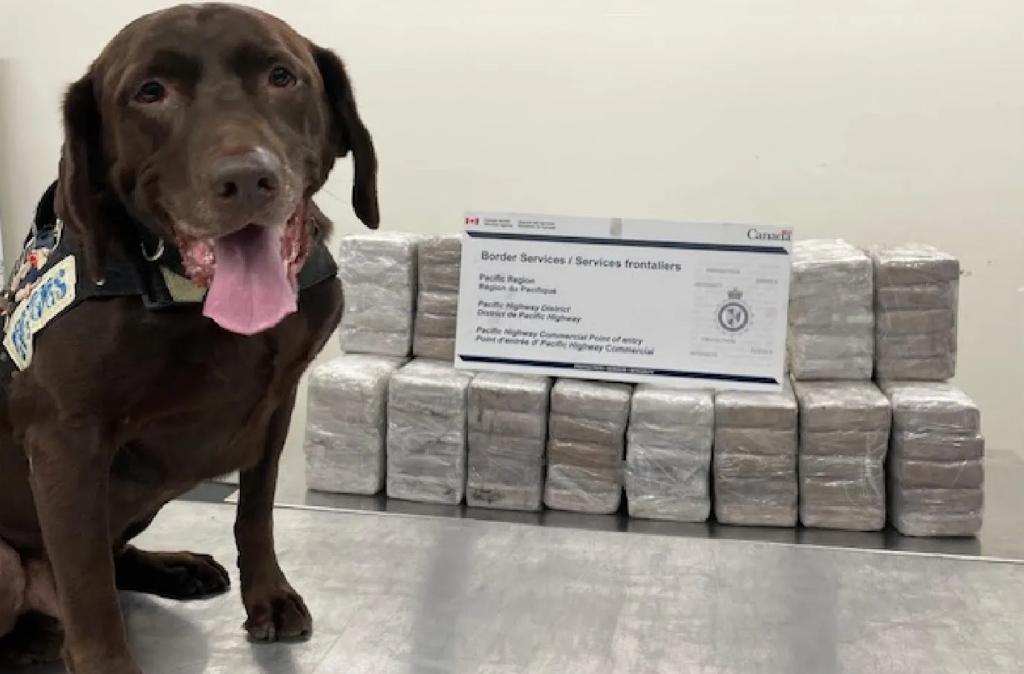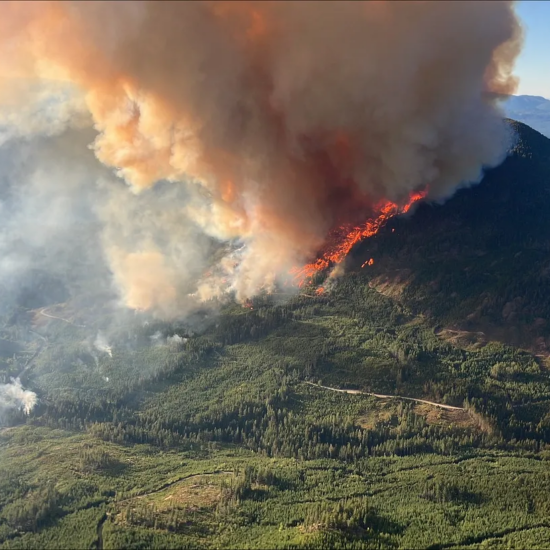
Bob Mackin
More than 70,000 people could be involved in organized crime groups across Canada, according to an estimate from the Criminal Intelligence Service Canada.

A Canada Border Service Agency drug-sniffing dog was involved in major cocaine busts at the Canadian border last fall. (CBSA)
The agency’s 2024 Public Report on Organized Crime in Canada said it has assigned threat ratings to 668, of which seven are deemed high-level threats and 128 medium-level threats. More than 20 street gangs are evolving into higher threats and more than 70 are involved in smuggling firearms from the U.S.
The 668 known groups include a combined 12,075 criminal actors, “many of whom interact within more than one group.”
No surprise, the three most-populated provinces, Ontario, Quebec and British Columbia, are where three-quarters of the groups are based, because they can access densely populated cities, international airports, ports and major highways necessary to import and transport illicit goods.
The report said organized crime groups in Canada were linked to 48 countries, with U.S., Mexico and Colombia at the top of the list, “all of which are generally source and transit countries for illicit drugs, such as methamphetamine, fentanyl, heroin, and cocaine. The U.S. also remains the primary source for firearms smuggled into Canada.”
Vancouver, which lacks a dedicated policing agency at its ports, is a key hub for illicit trade with Asian markets.
Most organized crime groups continue to be heavily involved in cocaine, “with pricing at its lowest in 25 years.”
“Fentanyl and methamphetamine activities continue to expand; involvement in fentanyl has increased by 42% since 2019,” the report said. “Organized crime groups continue to be involved in illicit cannabis production and trafficking activities. They have also infiltrated and exploited the legal framework to continue to profit from high consumer demand.”
Vehicle theft remained steady last year, after doubling the previous year. The crackdown in Eastern Canada has increased theft in Western Canada.
Organized crime involvement in human trafficking has grown 24% since 2020, with Indigenous and gender and sexual minorities the most-targeted. “Some then groomed into recruiters.” Online platforms like Snapchat are used to approach victims, then criminals use online escort or classified profiles to control and exploit the recruits.
The report summarized activities of five Western Canada-based networks, but did not name them, disclose their geographic base or number of members. One that is connected to North American and Asian countries, “is involved in cocaine, fentanyl, precursor chemicals, cannabis, fraud, money laundering, loansharking, bookmaking, and intimidation/extortion. It uses individuals with specialized skills, using a hierarchy of roles depending on the specific job to optimize the group’s overall proficiency.”
In its 2021 report, CISC said high-level national threat groups had infiltrated the public sector in Canada.
NEW: Subscribe to theBreaker.news on Substack. Find out how: Click here.











